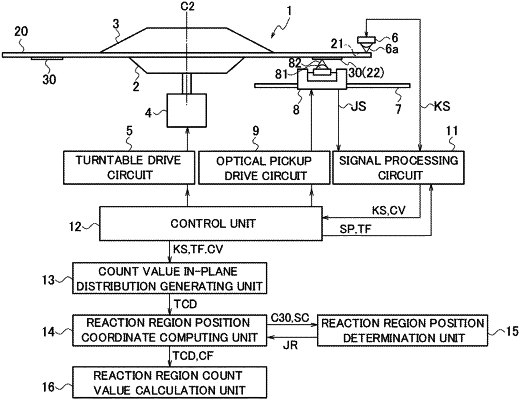| CPC G01N 21/55 (2013.01) [G01N 21/1717 (2013.01); G01N 33/53 (2013.01); G01N 2021/1791 (2013.01)] | 4 Claims |

|
1. An analysis device using an analysis substrate on which a plurality of reaction regions are formed by a fine particle for labeling a detection target substance being fixed to the detection target substance captured on a track, the analysis device comprising:
an optical pickup that receives reflected light obtained by irradiating the analysis substrate with a laser beam, and generates a light reception level signal; and
a controller, wherein the controller is configured to:
generate gate signals for each of a plurality of the tracks within a measurement range preset on the analysis substrate, the gate signals corresponding to a plurality of divided measurement ranges obtained by dividing each of the tracks in a circumferential direction, extract a fine particle pulse signal from the light reception level signal by using the gate signals, count a pulse number for each of the gate signals from the extracted fine particle pulse signals, and output a count value for each of the divided measurement ranges;
generate count value in-plane distribution data in the measurement range based on the count value;
estimate positions of all the reaction regions based on the count value in-plane distribution data;
select two first reaction regions from all the estimated reaction regions, and fit a circumference of a precise circle with a predetermined size to individual center positions of the two first reaction regions, so that the positions of all the reaction regions are specified based on the circumference and the individual center positions of the two first reaction regions; and
calculate the count value for each of all the specified reaction regions.
|